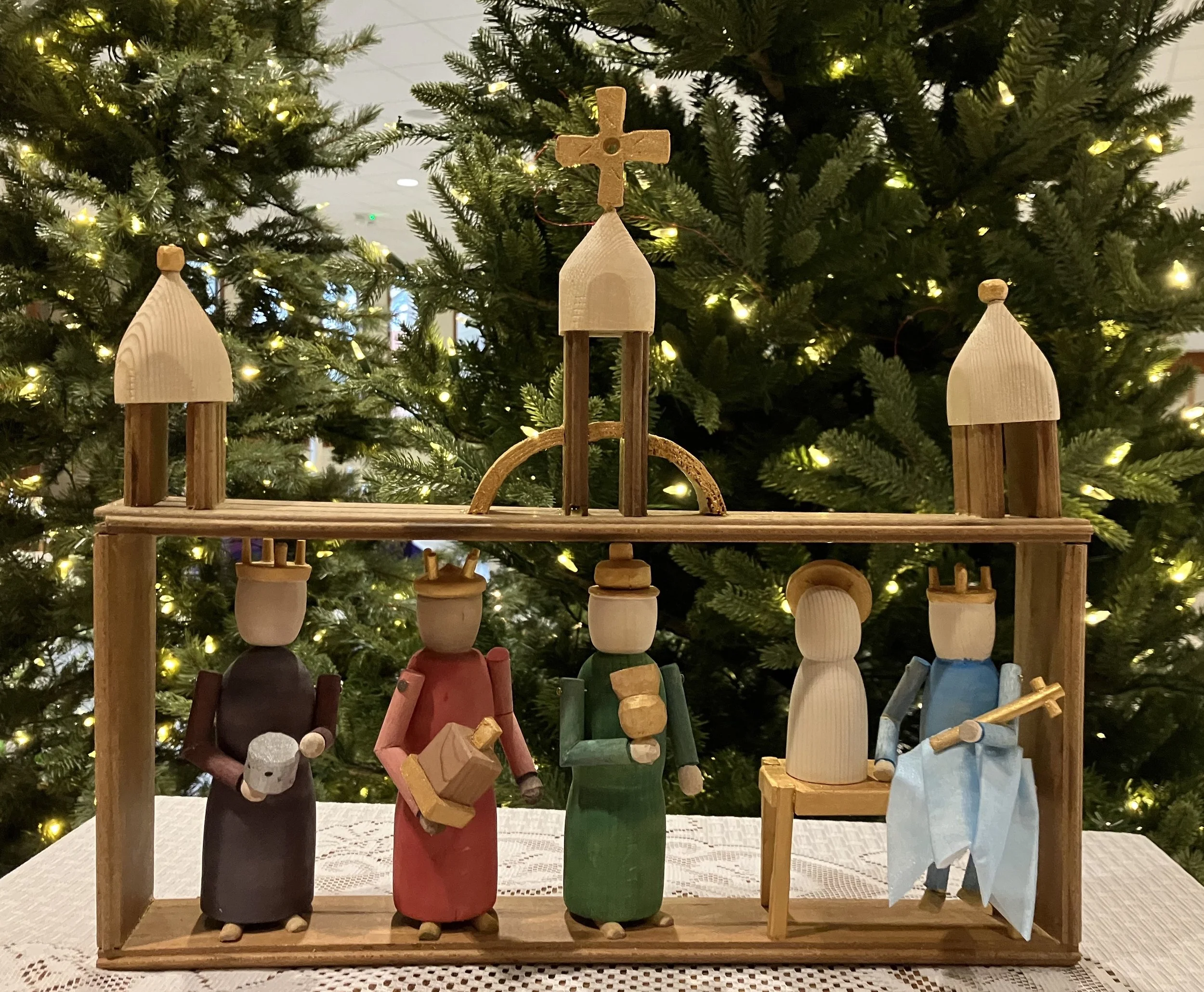Merry Christmas!
As many of us transition into the Christmas season, we are invited back into the magical world of craftsmanship. We’ve been lucky at Medieval Badges to see some of this craftsmanship up-close through the ongoing research-creation projects of Ellen Siebel-Achenbach. Last year, Ellen used linocuts to mark the season. This year, she’s been working with wood to re-imagine medieval badges as a Räuchermann (traditional German incense Smokers) and as a wooden nativity scene. Ellen has been as inspired by the original medieval badges as she has inspired them — literally in the case of the headless pilgrim badge of Saint Claude, which as a Räuchermann has not only been given a head but given again breath that flows through him and into the world.
Pewter badge, Sainte Claude, from Saint-Pierre Cathedral, Besançon, 1401-1500, 4.2 x 2.7 cm. CL4620. Paris, Musée de Cluny - musée national du Moyen Âge. Photographer: Gerard Blot. Photo credit: © RMN-Grand Palais / Art Resource, NY.
Ellen Siebel-Achenbach, Sainte Claude as Räuchermann, 2022.
Ellen’s wooden nativity scene from a Cologne badge preserves the details of the original craftsperson. The turrets and arches frame both compositions. Ellen has beautifully recreated the naive style of the figures, note especially the halo of the Christ Child or crowns of the Three Kings and the shapes of the gifts they present. Ellen has also utilized the three-dimensional aspect of her material to enliven the characters in another way. Though it is not clear from the photographs, the arms of Saint Claude, the Three Kings and the Virgin Mary have been attached so that they are movable. Both re-imaginings bring the badges to life not only with movement, but with colour. The colourful wooden figures invite us as viewers back to the original pewter badges to ask ourselves how they might have been embellished originally.
Ellen Siebel-Achenbach, Cologne Nativity scene, 2022.
Pewter badge, Three Kings, Cologne, Germany, 1275-1349, found in Dordrecht, the Netherlands, 4 x 3.1 cm. The Van Beuningen Family Collection, inv. 0537 (Kunera 00167). Photograph courtesy of The Van Beuningen Family Collection.
We are both proud and impressed by Ellen’s work. Her efforts to preserve traditional craftsmanship and to “bridge the gap between traditional “high” art history academic scholarship and “low” reconstructions of visual and material culture” allow us to witness the beauty of her work, while we learn to see old objects in new ways.




